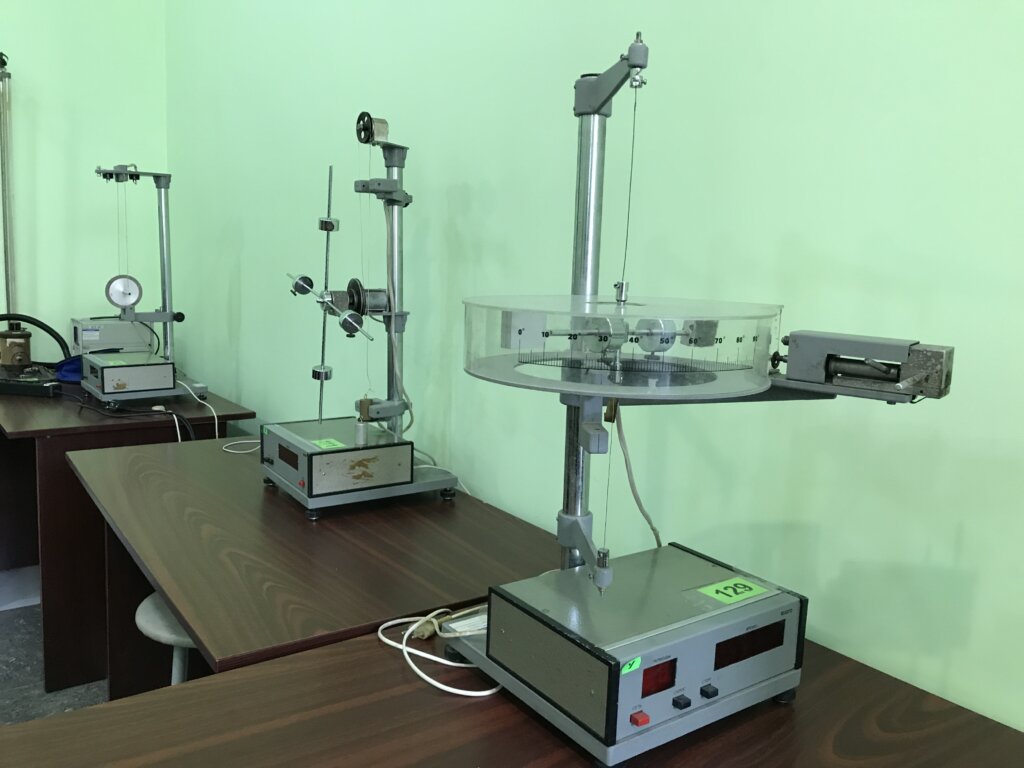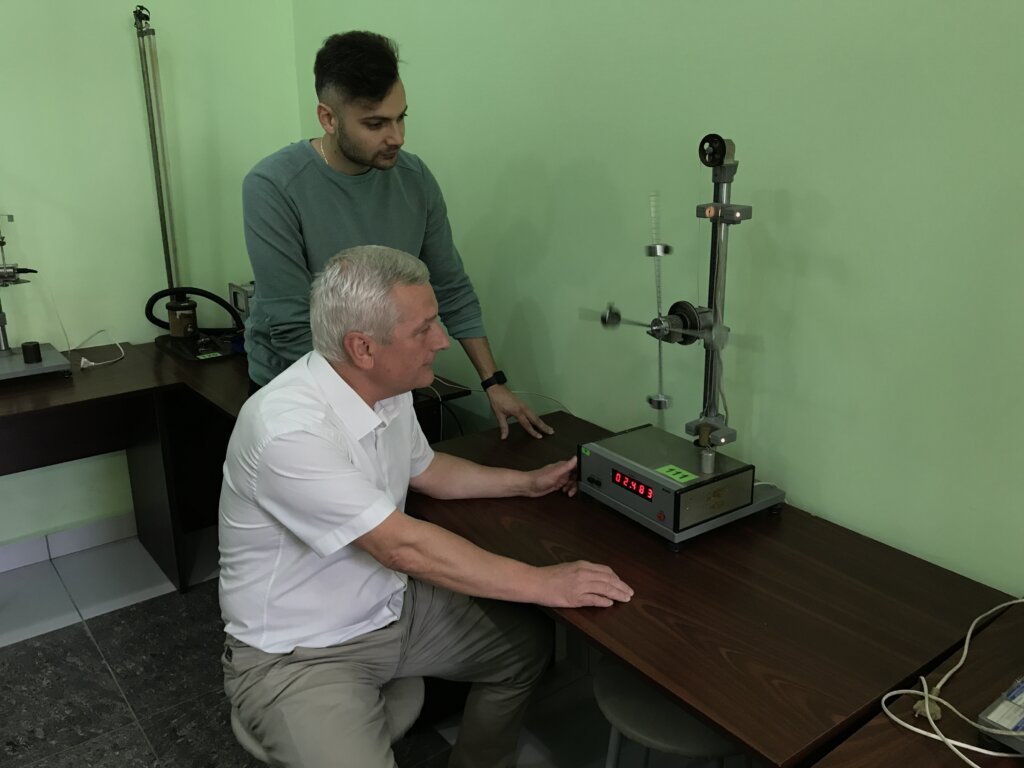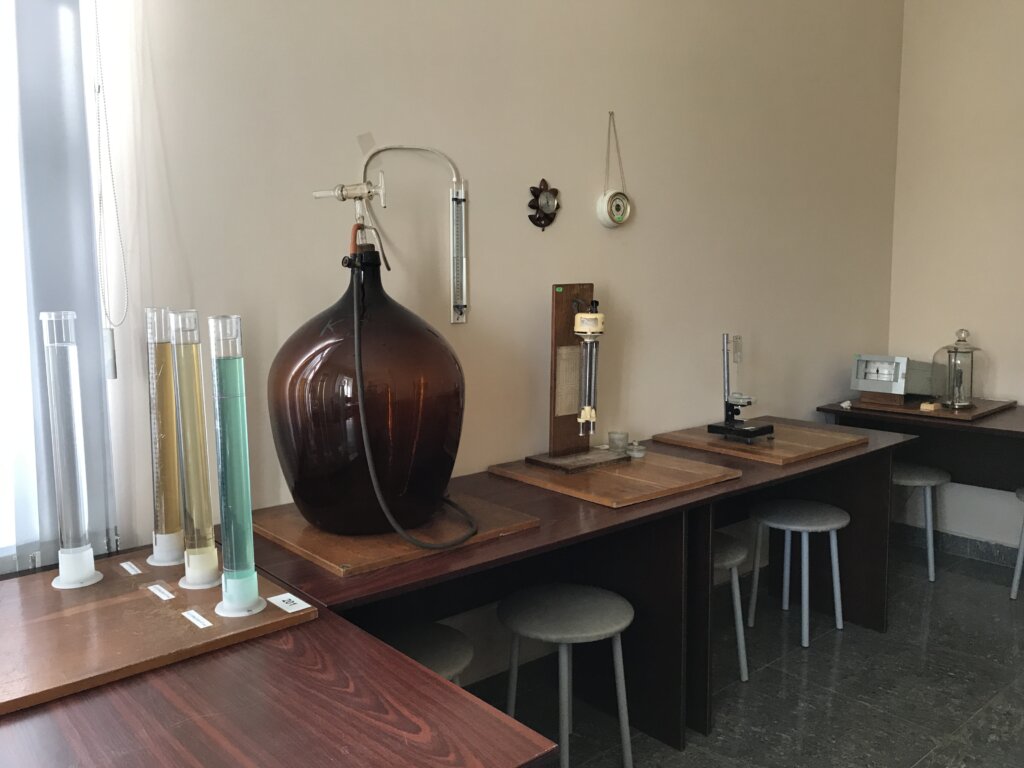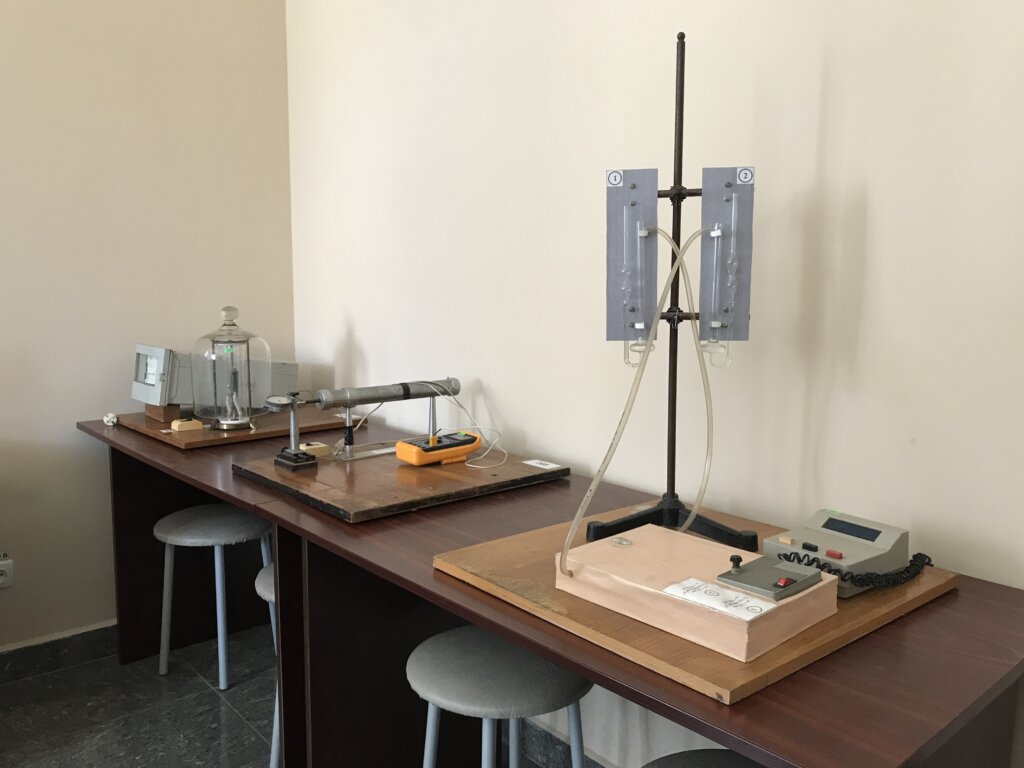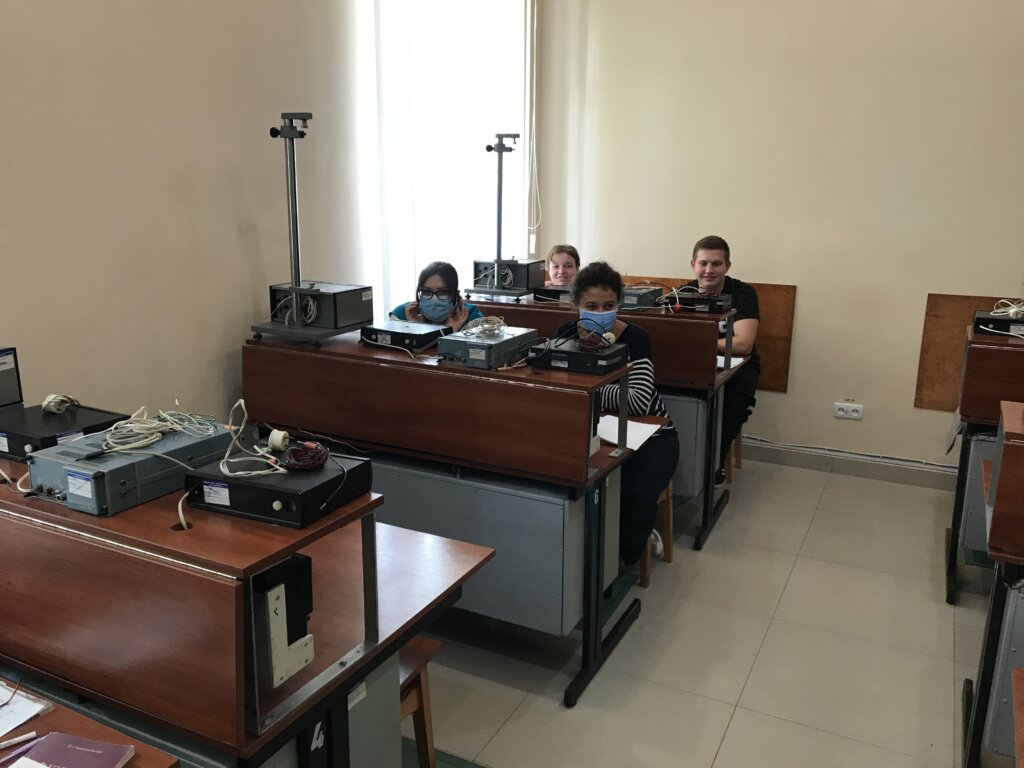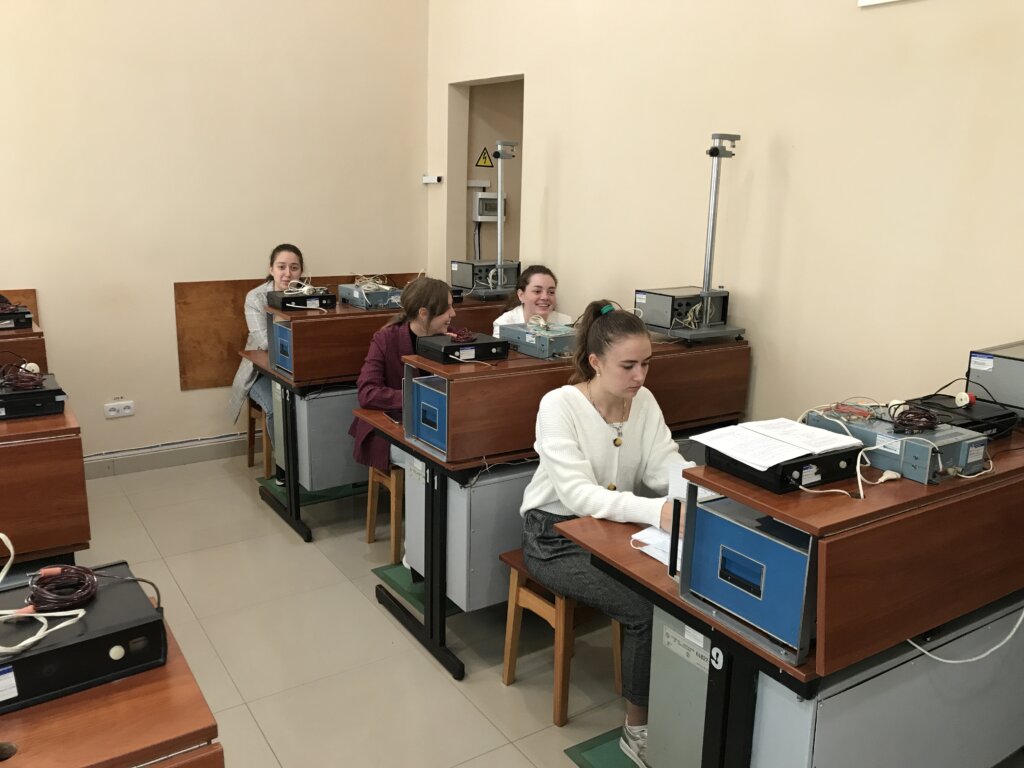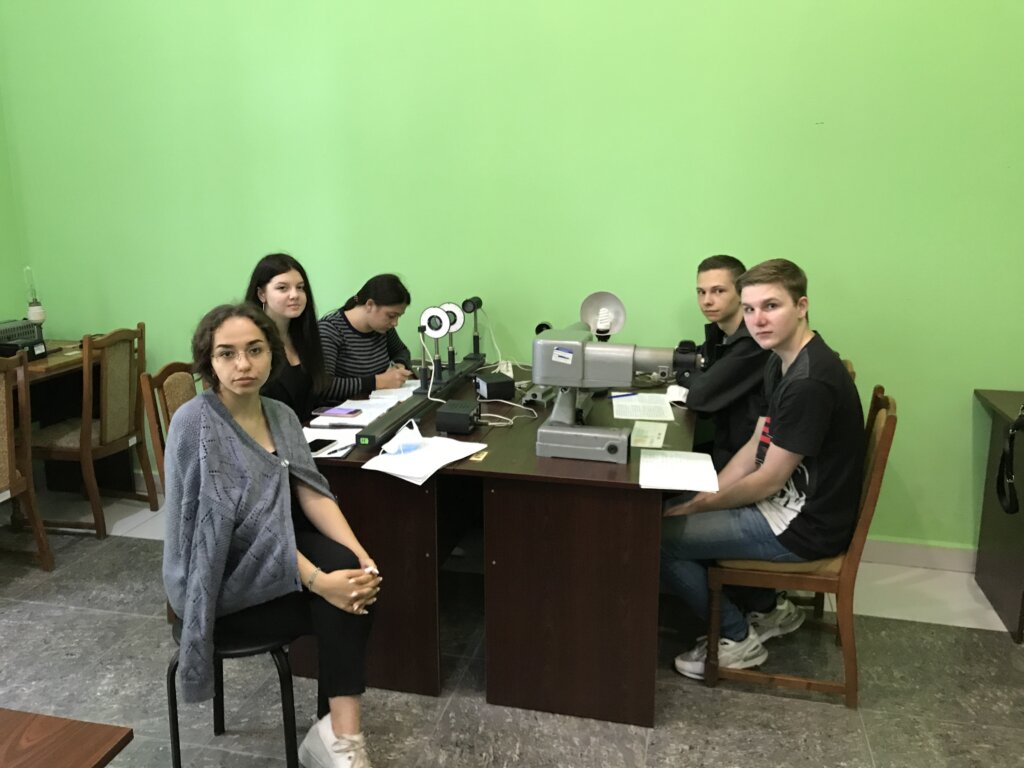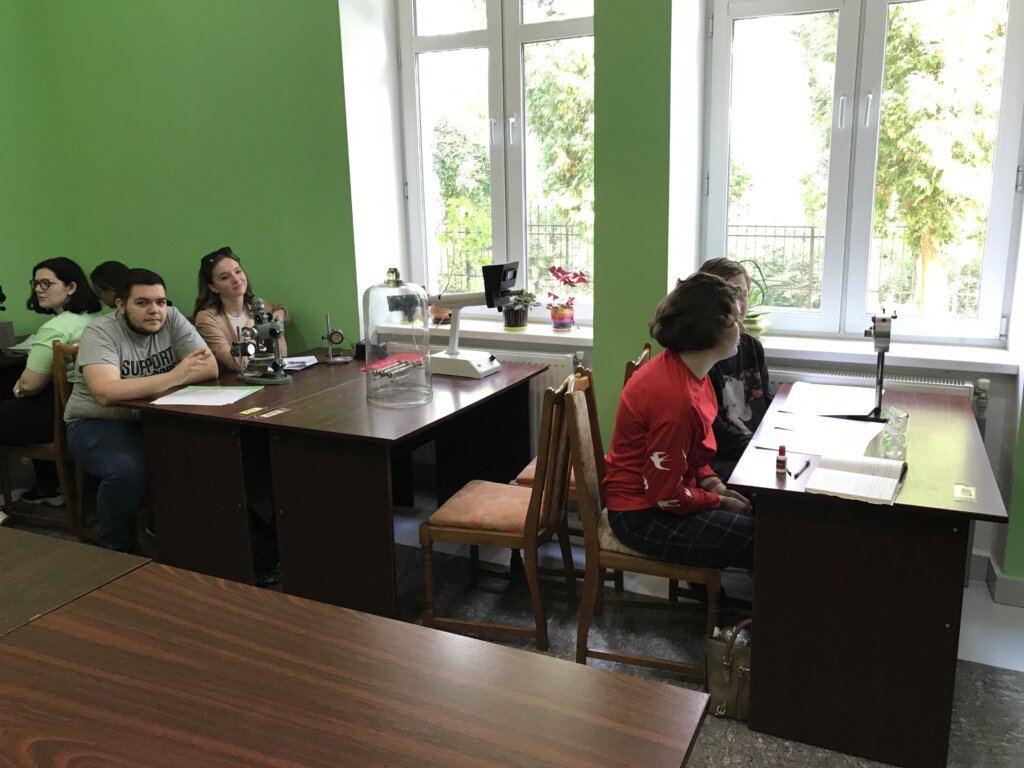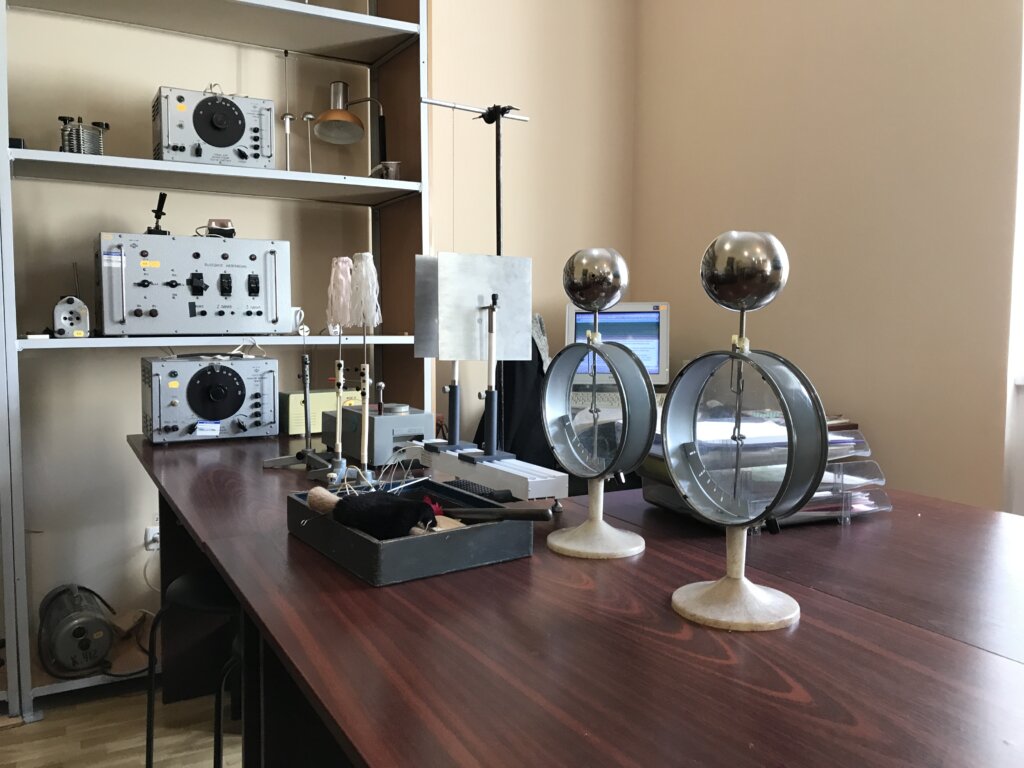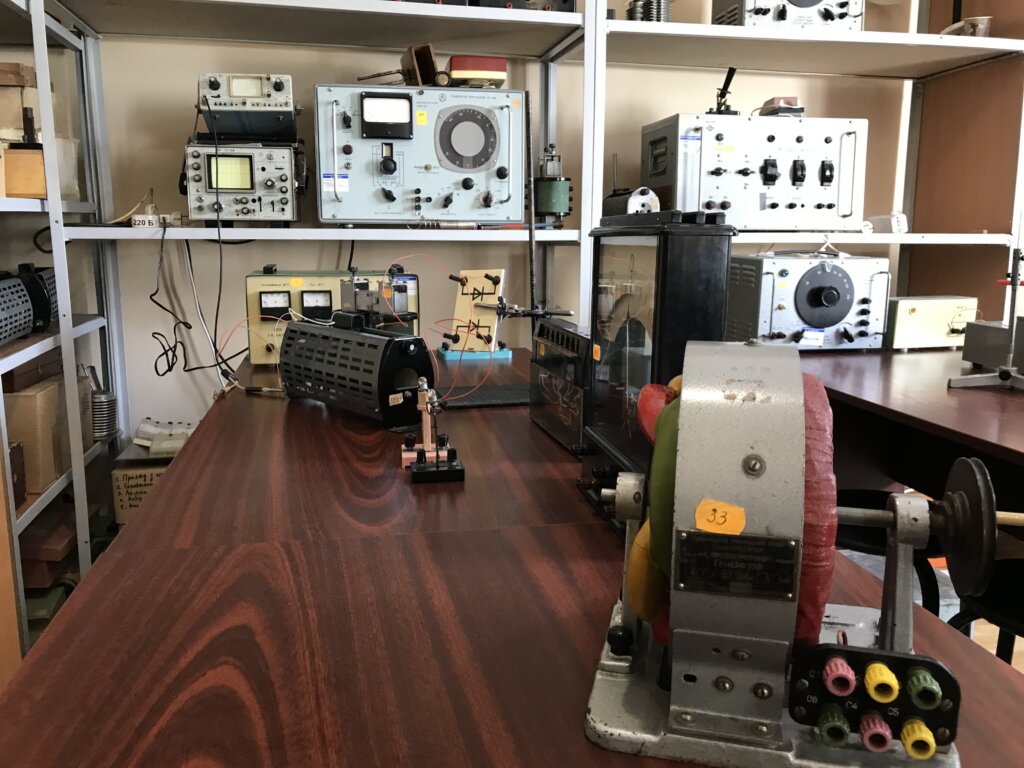General Physics Practical Work Laboratory (Department of General Physics)
- About the laboratory
- Employees
- Teaching materials
About the laboratory
Head – Kukharska L. V.
The Interdepartmental Laboratory of the General Physics Workshop of the Physics Faculty consists of:
- laboratory workshop on mechanics (room 101);
- laboratory workshop on molecular physics (room 103);
- laboratory workshop on electromagnetism (room 104);
- laboratory workshop on optics (room 102).
Classes on Physical Workshop are carried out for students of physical, biological, geographical, and chemical faculties.
A physical workshop on the Mechanics is held in the Laboratory for first-year students of the Physics Faculty in the first semester for the following specialties:
- 104 Physics and Astronomy (Physics and Astrophysics, Computer Physics, Quantum Computers and Quantum Programming);
- 105 Applied Physics and Nanomaterials (Computer Technologies in Applied Physics, Nanophysics and Nanomaterials);
- 014.08 Secondary Education (Physics).
LIST OF LABORATORY WORKS IN THE LABORATORY OF GENERAL PHYSICAL WORKSHOP
- Determining the density of bodies of a regular geometric shape.
- Study of rotational motion on the Oberbeck pendulum.
- Determination of the moment of inertia of the body using the Maxwell pendulum.
- Investigation of the dependence of the moment of inertia of a two-link system on its geometric parameters.
- Determination of the acceleration of free fall using a physical pendulum.
- Investigation of the process of elastic deformation of wire tension.
- Determination of the shear modulus by the dynamic method.
- Investigation of the process of elastic torsional deformation.
- Study of oscillatory processes.
- Determination of speed of sound in the air by the standing wave method.
- Experimental verification of the Bernoulli equation.
- Application of conservation laws to the study of inelastic collision on a torsional ballistic pendulum.
MOLECULAR PHYSICS
- Determination of the viscosity coefficient of a liquid by the Stokes method.
- Study of the dependence of the viscosity coefficient of a liquid on temperature.
- Determination of the viscosity coefficient of a liquid using an Ostwald capillary viscometer.
- Determination of the coefficient of surface tension of the liquid by the ring method.
- Study of the dependence of the surface tension coefficient of the liquid on the temperature by the method of maximum pressure in the bubble.
- Study of thermal expansion of metals.
- Determination of specific heat of metals by cooling method.
- Determination of the Boltzmann constant and the universal gas constant.
- Determination of the average free path length and effective diameter of air molecules.
- Determination of the ratio of heat capacities of air Cp/Cv by the Clément-Desormes method.
- Determination of the ratio of air heat capacities Cp/Cv by the standing wave method.
- Measurement of humidity with a psychrometer.
- Study of the critical state of matter.
- Study of the melting process of crystalline substances.
ELECTROMAGNETISM
- Verification of Kirchhoff’s laws.
- Measurement of voltages and resistances using a universal voltmeter.
- Study of the temperature dependence of metal resistance.
- Study of the temperature dependence of the resistance of semiconductors.
- Study of alternating voltage using an electronic oscilloscope.
- Verification of Ohm’s law for alternating current.
- Study of the phenomenon of voltage resonance.
- Study of the phenomenon of current resonance.
- Measurement of alternating current power and determination of phase shift between current and voltage oscillations.
- Investigation of attenuating electric oscillations.
- Determination of resistivity of resistive wire by technical method.
- Investigation of the electrostatic field.
- Study of the electromagnetic induction and self-induction phenomenona.
- Determination of the force characteristics of the magnetic field with an electrodynamometer.
- Determination of the Curie point of ferromagnetic metal alloys.
- Determination of the horizontal component of the induction of the Earth’s magnetic field.
- Determination of differential thermoelectric force and thermocouple calibration.
- Study of the semiconductor rectifier.
- Study of the transistor.
OPTICS
- Determination of the refractive index of a liquid using an Abbe refractometer.
- Determination of the light wavelength using a Fresnel biprism.
- Determination of the radius of curvature of the lens and the wavelength of light using Newton’s rings.
- Study of the diffraction grating.
- Study of the linear spectrum of radiation.
- Study of the phenomenon of natural rotation of the plane of polarization of light.
- Study of the laws of external photoeffect.
- Determination of the red border of the photo effect.
- Definition of the constant in Stefan-Boltzmann’s law.
- Verification of the Malus law.
Laboratory and practical classes are held in the Laboratory of Methods of Teaching Physics for students of the subject specialty 014.08 Secondary Education (Physics) in the following disciplines:
- Fundamentals of pedagogical research (4th semester, 2nd year);
- Methods of teaching physics (5th-7th semesters, 3rd and 4th years);
- Laboratory workshop in high school (8th semester, 4th year).
Undergraduate students (104 Physics and Astronomy and 105 Applied Physics and Nanomaterials specialties) are also passing the laboratory works on the Methods of Teaching Physics in Higher Education Institutions.
LIST OF LABORATORY WORKS IN THE LABORATORY OF METHODS OF TEACHING PHYSICS
- Educational experiments on kinematics.
- Educational experiments on dynamics.
- Educational experiments on molecular physics and thermodynamics.
- Educational experiments on electrostatics.
- Educational experiments with direct current.
- Educational experiments on electromagnetism.
- Educational experiments with alternating current.
- Educational experiments on geometric optics.
- Educational experiments on the dispersion and polarization of light.
- Educational experiments on interference and diffraction of light.
- Educational experiments on quantum physics.
- The use of an electronic oscilloscope in a demonstration experiment on mechanical and electromagnetic oscillations.
- The use of projection equipment in a demonstration experiment in physics.
- Using a personal computer in a physics training experiment.
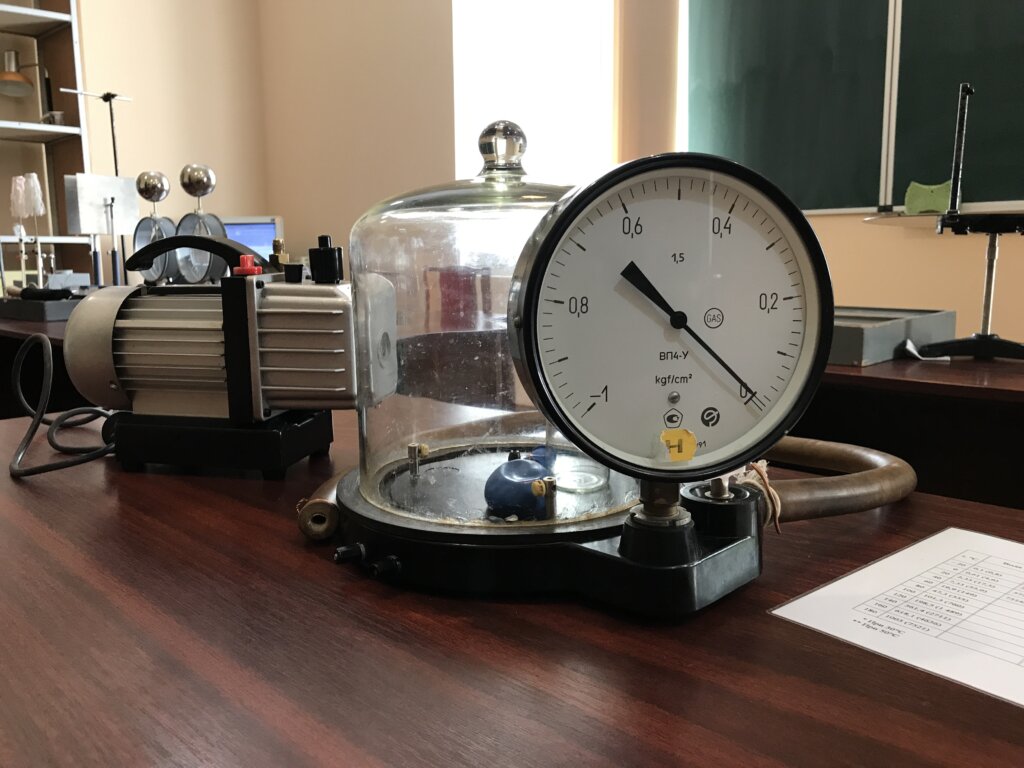
Fig.1. Photograph of the equipment for laboratory work No3: “Educational experiments on molecular physics and thermodynamics”.
Employees
| Laboratory Chief ManagerLesia Kukharska | Laboratory Chief Manager |
| Lead EngineerVitalii Shveidigula | Lead Engineer |
| 1st Category EngineerMariia Kodreanu | 1st Category Engineer |
Teaching materials
- Вакарчук С. О. Фізика : підручник : [для вищ. навч. закл. (гриф МОН України)] / С. О. Вакарчук, Т. М. Демків, С. В. Мягкота. – Львів : ВЦ ЛНУ імені Івана Франка, 2010. – 458 с.
- Кушнір Р. М. Загальна фізика. Механіка. Молекулярна фізика : навч. посіб. : [для студ. нефізич. спеціал. вищ. навч. закл.] / Р. М. Кушнір. – Львів : ВЦ ЛНУ імені Івана Франка, 2003. – 404 с.
- Стадник В. Й. Оптика, елементи атомної та ядерної фізики : навч. посіб. : [для студ. вищ. навч. закл. (гриф МОН України)] / В. Й. Стадник. – Львів : ВЦ ЛНУ імені Івана Франка, 2008. – 360 с.
- Антоняк О. Т. Загальна фізика. Основи електрики і магнетизму : навч. посіб. : [для вищ. навч. закл.] / О. Т. Антоняк. – Львів : ВЦ ЛНУ імені Івана Франка, 2009. – 240 с.
- Антоняк О. Т. Загальна фізика : підґрунтя оптики : навч. посіб. / О. Т. Антоняк, В. Й. Стадник. – Львів : ЛНУ імені Івана Франка, 2019. – 216 с.
- Конопельник О. І. Фізика з основами геофізики. Лабораторний практикум : навч. посіб. – 2-е вид., зі змін. та доповн./ О. І. Конопельник. – Львів : ВЦ ЛНУ імені Івана Франка, 2014. – 220 с.
- Антоняк О. Т. Оптика. Лабораторний практикум : навч. посіб. : [для студ. природн. ф-тів] / О. Т. Антоняк, Я. І. Шопа. – Львів : ЛНУ імені Івана Франка, 2016. – 156 с.
- Демків Т. М. Основи теорії похибок фізичних величин. Методичні матеріали для загального фізичного практикуму / Т. М. Демків, О. І. Конопельник, Я. І. Шопа. – Львів : ВЦ ЛНУ імені Івана Франка, 2008. – 40 с.
- Пастернак Н. В. Методика викладання фізики. Навчальні експерименти : навч. посіб. : [для студ. фіз. ф-ту] / Н. В. Пастернак, О. І. Конопельник, О. В. Радковська. – Львів : ВЦ ЛНУ імені Івана Франка, 2007. – 106 с.
